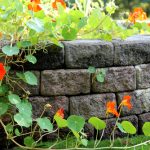 The Ultimate Guide to Retaining Walls: Types, Materials, and Cost
The Ultimate Guide to Retaining Walls: Types, Materials, and Cost
Retaining walls are a practical and attractive addition to any property. They are designed to hold back soil and prevent erosion while also adding a decorative accent to your landscaping. Retaining walls can also help to create level areas on uneven terrain, allowing for additional outdoor living space. There are many different types of retaining walls, along with various materials and costs to consider. If you’re considering a retaining wall for your property, here’s everything you need to know.
Types of Retaining Walls
Gravity Retaining Walls:
Gravity retaining walls rely on their weight to hold back the soil. These walls are made of concrete or stone blocks and do not require any mortar or other materials to hold them together. Gravity walls are best suited for shorter walls and light slopes, as their structure typically cannot withstand heavier loads.
Cantilever Retaining Walls:
Cantilever retaining walls are made of reinforced concrete and have a horizontal base that extends back into the soil. The base acts as a lever to resist the pressure of the soil and maintain stability. Cantilever walls are ideal for building taller walls, up to 16 feet high, and can withstand more significant loads than gravity walls.
Sheet Pile Retaining Walls:
Sheet pile retaining walls are made of steel, vinyl, or wood planks that are driven into the ground with a heavy hammer. Sheet piling is an excellent option for retaining walls in soft soils or where space is limited. They can be used for short walls or in conjunction with other types of retaining walls to provide added support.
Anchored Retaining Walls:
An anchored retaining wall uses cables or rods to anchor the wall to the soil behind it, providing additional support and stability. This type of wall is ideal for building tall or supersized walls and can hold larger amounts of weight than other types of walls.
Materials for Retaining Walls
Concrete:
Concrete is a robust and durable material that can withstand heavy loads and provide a solid foundation for your retaining wall. It’s also highly customizable, allowing for a range of colors and finishes to create the desired look and feel.
Stone:
Stone retaining walls break up the monotony of the landscape with natural-looking designs. Stone is an excellent choice for a retaining wall that blends seamlessly with the natural surroundings. It’s also easy to work with, and the walls can be built to fit any shape or size.
Brick:
Bricks are versatile and can be used to create a sophisticated and classic look for retaining walls. Brick walls come in a variety of colors and styles, making them easy to match with other materials.
Timber:
Wooden retaining walls provide a natural, warm appearance and are ideal for informal garden settings. Timber walls can be an affordable and straightforward way to build a retaining wall.
Cost of Retaining Walls
The cost of a retaining wall will depend on several factors, including the type of wall, materials used, and the complexity of the installation. Below are rough estimates of the cost of different types of retaining walls per square foot:
Gravity walls: $15 – $20
Cantilever walls: $20 – $25
Sheet pile walls: $20 – $30
Anchored walls: $30 – $40
Concrete: $20 – $30
Stone: $25 – $30
Brick: $20 – $25
Timber: $15 – $25
It’s essential to keep in mind that these are only approximate costs, and there are other factors to consider, such as site preparation and drainage systems.
Retaining Wall Installation
Installing a retaining wall is not a DIY project, and it’s best to hire a professional contractor for the job. The installation process usually involves the following steps:
1. Site Preparation:
The site is surveyed, and any necessary construction permits and building codes are obtained. The area is then excavated, and the ground is leveled for the foundation.
2. Foundation:
The foundation is constructed using gravel or concrete to provide a base for the retaining wall to sit on.
3. Material Installation:
The retaining wall materials are then installed, according to the design plan. Stones, bricks, or concrete blocks are carefully placed in the correct position and secured to the foundation as needed.
4. Backfill:
The backfill process involves filling in the area behind the retaining wall with dirt or gravel to provide additional support to the wall.
5. Drainage:
Proper drainage is vital to ensure that water does not build up and cause damage to the wall. A drainage system, such as pipes or weep holes, is often installed to allow for water to flow out of the wall.
6. Finishing Touches:
Finally, any finishing touches, such as adding plants or lights, are completed to enhance the overall look of the wall.
Final Thoughts
A retaining wall can enhance your landscape, adding depth and dimension to your outdoor living space. With various types of walls, materials, and installation options available, it’s important to understand the various factors involved when choosing and installing a retaining wall. Keep in mind the soil, drainage, and the type of material used, as well as the overall design goals for your property. By taking the time to consider these factors, you can ensure that your new retaining wall provides the practical support and aesthetic enhancement you desire.
